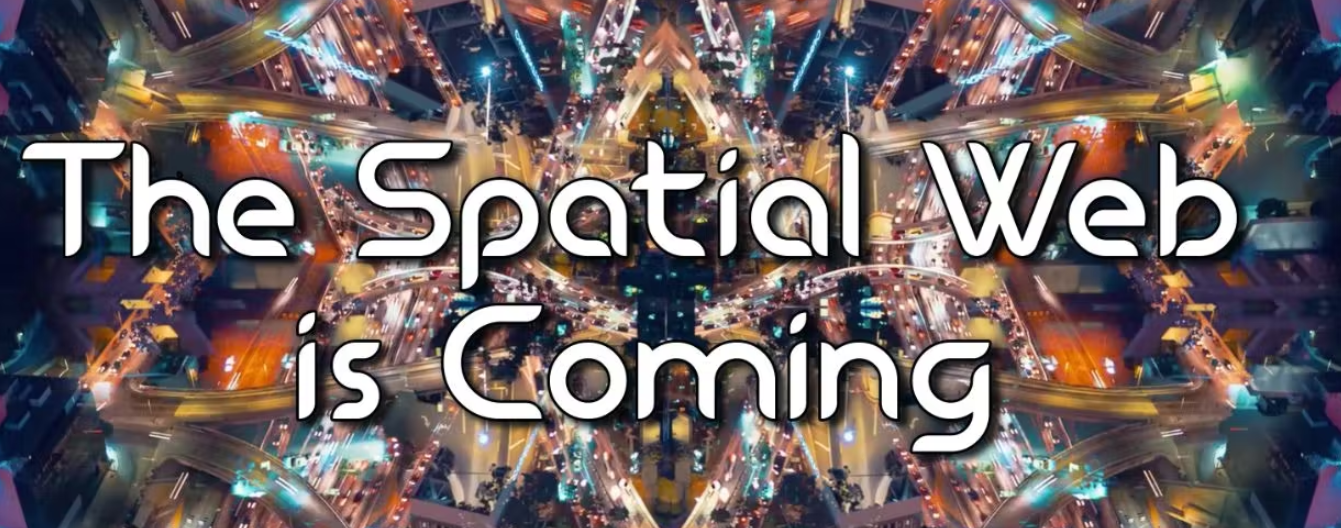Okay, so we build the Smart Technologies, but how do they translate into the Spatial Web?
Enter The Spatial Web Foundation and VERSES Technologies, a next-gen AI company that is literally laying the foundation for the Spatial Web Protocol by establishing and defining an entirely new computing technology stack comprised of three tiers: Interface, Logic & Data.
The Interface Tier blends spatial computing experiences, merging AR & VR experiences with our physical world. VERSES has created the Hyperspace Transaction Protocol (HSTP), using Hyperspace Modeling Language (HSML), as the foundation for a common networked terminal, to bring all the interface tier components together in order to facilitate an indexed and searchable Spatial Web Browser of every person, place or thing, both real and digital.
As Dan Mapes of VERSES points out, "HTML lets you program a web page - HSML lets you program a web space."
The Logic Tier
The Logic Tier enables the parsing of this huge amount of new spatial & UX data through cognitive computing methods, powered by VERSES’ flagship contextual computing AI Operating System called, COSM™.
On September 21, 2022, VERSES introduced the creation of its new Artificial Intelligence Lab and Sensor Fusion Research Facility, showcasing their technology portfolio, including COSM™, and providing an immersive space for data science and product development teams to cultivate advanced adaptive intelligence solutions required for translating diverse data into contextual awareness between humans, machines and AI in physical and digital spaces.
This brings us to the Data Tier.
In a world where it will become more and more challenging to decipher between real and digital experiences (think, deep fakes), trust and verification will become paramount to our security.
Distributed Ledger Technologies like Blockchain offers a “trust-less” cryptographically secure architecture. In DLTs, there is no need for any third-party entity, such as a corporation or government, or even an attorney or accountant, to act as a trusted central authority figure. DLTs provide us with a real opportunity to shift data sovereignty, control, and security into the hands of individuals.
Smart Contracts, at the heart of DLTs, are programmable sets of rules, stored on Blockchains, and run when certain pre-determined conditions are met. These automated, self-executing & immutable strings of code are recorded onto Distributed Ledger Blockchains, securing transactions & agreements by replacing static documents and the need for third-party mediation.

Through intelligent automation, Smart Contracts secure the management of property rights, spatial rights, proof of origination, verifiable traceability, and auto-execution of payments and transfer of assets, providing security, protecting privacy, and allowing risk-free interoperability — all essential to a favorable and prosperous augmented and networked Web 3.0 experience.
++ This is Part 3 of a four-part series titled, “The Spatial Web is Coming… Is Web 3.0 Ready?”
Read more in Part 4 to find out how to stay ahead of the curve, and why it is critical for everyone to be included in this new network.
Missed Part 1? Find it here.
Special thanks to Dan Mapes, President and Co-Founder, of VERSES Technologies, and Director of The Spatial Web Foundation. If you’d like to know more about The Spatial Web, I highly recommend a helpful introductory book written by Dan and his VERSES Co-Founder, Gabriel Rene, titled, “The Spatial Web,” with a dedication “to all future generations.”
#decentralization #blockchain #bitcoin #crypto #ethereum #cryptocurrency #decentralized #cryptocurrencies #defi #btc #fintech #smartcontracts #cryptonews #dapps #technology #hodl #eth #blockchaintechnology #bitcoinnews #wallet #exchange #blockchainnews #investment #mining #ai #money #bitcoinmining #scalability #secure #coinpaymentsmoonmission





